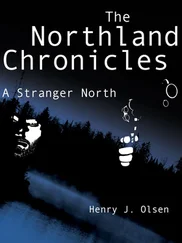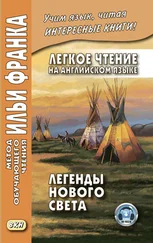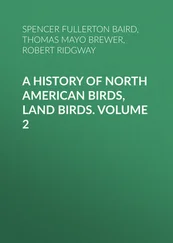North American Agroforestry
Здесь есть возможность читать онлайн «North American Agroforestry» — ознакомительный отрывок электронной книги совершенно бесплатно, а после прочтения отрывка купить полную версию. В некоторых случаях можно слушать аудио, скачать через торрент в формате fb2 и присутствует краткое содержание. Жанр: unrecognised, на английском языке. Описание произведения, (предисловие) а так же отзывы посетителей доступны на портале библиотеки ЛибКат.
- Название:North American Agroforestry
- Автор:
- Жанр:
- Год:неизвестен
- ISBN:нет данных
- Рейтинг книги:4 / 5. Голосов: 1
-
Избранное:Добавить в избранное
- Отзывы:
-
Ваша оценка:
- 80
- 1
- 2
- 3
- 4
- 5
North American Agroforestry: краткое содержание, описание и аннотация
Предлагаем к чтению аннотацию, описание, краткое содержание или предисловие (зависит от того, что написал сам автор книги «North American Agroforestry»). Если вы не нашли необходимую информацию о книге — напишите в комментариях, мы постараемся отыскать её.
Explore the many benefits of alternative land-use systems with this incisive resource North American Agroforestry
North American Agroforestry
North American Agroforestry — читать онлайн ознакомительный отрывок
Ниже представлен текст книги, разбитый по страницам. Система сохранения места последней прочитанной страницы, позволяет с удобством читать онлайн бесплатно книгу «North American Agroforestry», без необходимости каждый раз заново искать на чём Вы остановились. Поставьте закладку, и сможете в любой момент перейти на страницу, на которой закончили чтение.
Интервал:
Закладка:
We propose a complementary strategy for advancing understanding of the conditions under which the desired attributes of agroforestry practice may be achieved and how well various systems can be expected to perform. This involves harnessing the experience and learning processes of numerous, dispersed agroforestry practitioners into purposive knowledge networks. During the past decade, a series of regional agroforestry networks have been established (e.g., Mid‐American Agroforestry Working Group [MAAWG], Northeast/Mid‐Atlantic Working Group [NEMA], Pacific Northwest Agroforestry Working Group [PNAWG], Southwest Agroforestry Action Network [SWAAN], etc.). In addition, a number of regional specialty crop cooperatives have formed (e.g., Midwest Elderberry Cooperative, multiple chestnut cooperatives, etc.). What is still needed is to challenge these regional working groups to share and evaluate their experience with others about specific activities along integrative themes. Facilitators, who might come from universities, federal agencies such as the National Agroforestry Center, and/or NGOs including the Savanna Institute, would help to link landowners with one another and with other key actors from production, trade, NGOs, professional associations, land‐grant universities, national agency research laboratories, the markets that are essential for viable systems, and various policy units. They would document individual and collective learning processes with an aim to move knowledge from the particular, context‐specific state to a more global and predictive one integrating knowledge across landscapes.
Workshops and study tours designed to help participants recognize and evaluate the informal experimental design and evaluation processes in which landowners engage, and how they inform these processes through their respective learning networks, would serve to sharpen and focus the collective expert judgment that develops. In recent years, many such workshops have been established. For example, in 2013, the Center for Agroforestry, in conjunction with MAAWG and via initial funding from SARE, established an annual Agroforestry Academy to help address this need. As of 2019, 175 individuals (farmers and educators alike) have been trained across seven academies, and a longitudinal study is ongoing to extract lessons learned and to create a learning network among the trainees (Gold et al., 2019). The Savanna Institute is also very active in hosting workshops and study tours and linking farmers together in networks. These activities overlap with conventional extension roles in agriculture and forestry, helping to provide a dual purpose and justification for funding.
Numerous trainings, workshops, and study tours have been very successful in attracting agroforestry practitioners. These individuals, varying widely in age from their 20s to their 60s, are typically curious, open‐minded landowners, many of whom come from an understanding of permaculture, who believe there may be a better or different way to manage agricultural and forestry resources than conventional land use approaches. They are also likely to have a multigenerational vision for the development of their production system, while at the same time adopting a willingness to compromise it in practical terms to the realities of today’s transient society. Agroforestry attracts individuals who value hard work and understand the critical role of management in generating multiple outputs in as complementary and noncompetitive a manner as possible. They are likely to experiment with various components of their evolving production system and to have created a diverse network of information resources to assist their efforts to design new systems and informally test new hypotheses. Such people can be found in the membership of numerous organizations throughout the United States and Canada (e.g., the Association for Temperate Agroforestry [AFTA], the Appalachian Beginning Forest Farmer Coalition [ABFFC], etc.) that are concerned with the development and marketing of alternative crops and enterprises or the management of natural resources. In a highly connected world of social media, they can easily reach out to existing organizations, anticipating their role in satisfying their needs for learning, improving their practices, and addressing important social issues. Once they are part of such networks, they attract others to join.
Implementation of the proposed strategy is well underway, and critical perceptual and institutional barriers to improving the capacity for knowledge and information generation about agroforestry are being addressed. Scientific knowledge about agroforestry is rapidly being integrated into practice via the host of organizations previously mentioned (Gold, 2019).
The important implication is that landowners have now become an integral part of the knowledge generation process. This requires careful examination of the processes they use, the products they develop, and the various learning groups with whom they interact. In doing so, the research and development community now acknowledges and participates in the dense networks of informal learning about agroforestry that they understand and appreciate. As stated, numerous organizations are now playing important roles in developing generalizable knowledge if adequately recognized and organized to do so. Actions are being taken to link them. In this way, agroforestry now offers important opportunities fostering innovation in land use management.
Progress to Date and Challenges Ahead
The potential for domestic agroforestry and the constraints to its development that were first identified in 1989 (Lassoie et al., 1991) and then reexamined 2 yr later (Lassoie & Buck, 1991) are dramatically different from those facing us today (Gold, 2019). Agroforestry practices are becoming part of the repertoire of management strategies that are emerging from the research and development community to address complex land use sustainability issues within interdisciplinary forums.
As mentioned above, however, agroforestry is a hybrid of the established fields of agriculture and forestry, closely aligned with the science of agroecology and regenerative agriculture. Therefore, each new approach will face its own set of challenges as it moves from theory into practice. Practical application of these approaches also will face different challenges and offer different opportunities to the research and development community. These challenges and progress to date in meeting them are discussed here as well as specific recommendations to further advance agroforestry research, development, and practice in the United States.
Basic Challenges and Progress
Agroforestry in the United States has faced some unique challenges as an emerging land use strategy, many of which are being overcome. First, concepts and methodologies were originally obtained from international experiences primarily in developing, tropical countries with very different ecological and socioeconomic contexts. In recent decades, agroforestry in the United States and Canada (and Europe) has made huge strides to refine relevant concepts and methodologies that fit the temperate zone and the Western, industrialized realities in which we live. As such, domestic agroforestry has evolved at the intersection of the well‐established fields of agriculture, horticulture, and forestry. As an emergent applied science, agroforestry has aligned with agroecology and established a research–education–development infrastructure that integrates across these well‐established but separate disciplines.
Inherent Constraints Being Overcome
Because domestic agroforestry has evolved within a modern society primarily located in a temperate region of the world, it has faced inherent constraints not found in most developing countries. First, the climate in much of North America is not conducive to fast plant growth, especially by long‐lived woody perennials. In addition, some of our indigenous tree species are naturally slow growing and yield only one primary product—usually timber. As a consequence, the use of trees for timber in many types of agroforestry practices do not directly yield useful or marketable products for many years—often after the life of the persons who planted them! Knowing this, domestic agroforestry has instead focused on overstory nut‐ and fruit‐bearing trees and shrubs that come into economic production in 3‐15 yr (e.g., elderberry [ Sambucus nigra L. ssp. canadensis (L.) R. Bolli], aronia [ Aronia sp.], eastern black walnut [ Juglans nigra L.], pecan [ Carya illinoinensis (Wangenh.) K. Koch], Chinese chestnut [ Castanea mollissima Blume]). Furthermore, fast‐growing species of the genus Populus (hybrid poplar, cottonwood, etc.) and Salix (clonal willow) (Robertson et al., 2017; Volk et al., 2006) are being used for biomass (MacPherson, 1995) and as woody florals (Gold, Godsey, & Josiah, 2004) and are integrated into riparian forest and upland buffer production systems to provide multiple products and environmental services. Finally, native perennial grasses (e.g., switchgrass [ Panicum virgatum L.]) are also being used for biomass and other ecosystem services within a variety of agroforestry practices (Gamble, Johnson, Current, Wyse, & Sheaffer, 2016; Schulte et al., 2017)
Читать дальшеИнтервал:
Закладка:
Похожие книги на «North American Agroforestry»
Представляем Вашему вниманию похожие книги на «North American Agroforestry» списком для выбора. Мы отобрали схожую по названию и смыслу литературу в надежде предоставить читателям больше вариантов отыскать новые, интересные, ещё непрочитанные произведения.
Обсуждение, отзывы о книге «North American Agroforestry» и просто собственные мнения читателей. Оставьте ваши комментарии, напишите, что Вы думаете о произведении, его смысле или главных героях. Укажите что конкретно понравилось, а что нет, и почему Вы так считаете.












